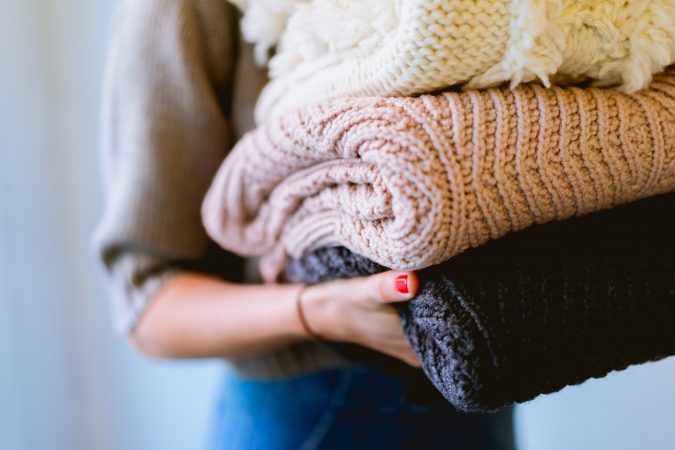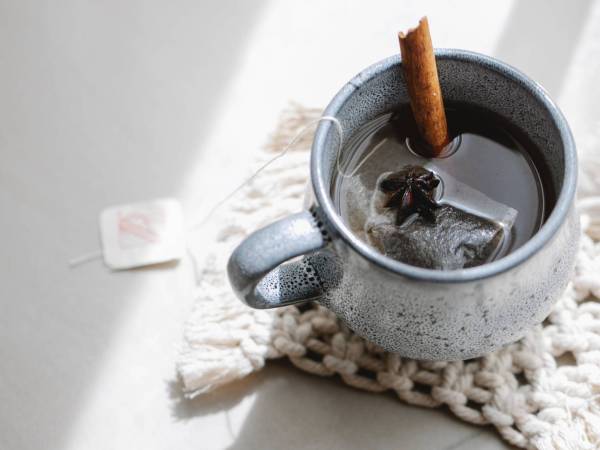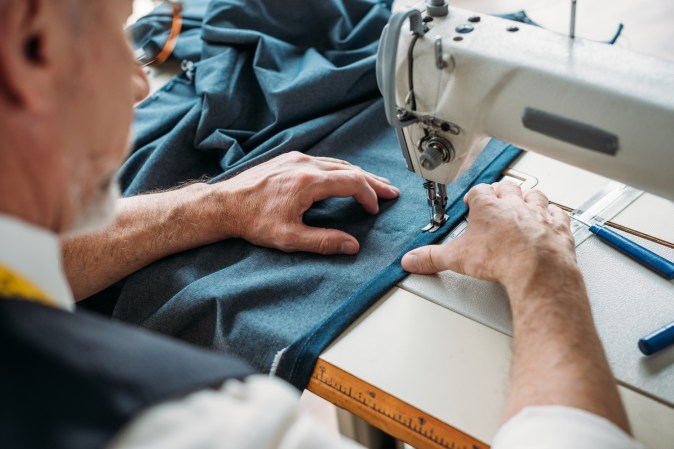


Stains—the evidence of our sloppy crimes, the righteous whistleblowers, Hansel and Gretel marking the way to a gingerbread house filled with guilty pleasures, and secret rendezvous. How many garments ruined, how many reputations soiled, all by a stupid stain?
They seem to haunt me wherever I go, and sometimes it seems like I’m ruining a piece of clothing a day. Luckily, I found a stain-whisperer who helped me fight the old curse, and get my clothes—if not life—in order. If you’re anything like me and your shirts looks like a map of indelible moments, fear not and follow the advice of an expert.
Chris Ely, professional butler, at your service

Tall, lanky, with bright eyes, a perfect British accent, and impeccable manners, it’s easy to imagine Chris Ely walking the lawns of Downton Abbey instead of the sleepy streets of Irvington, New York, his current residence. And you would be right—Ely was trained in his craft by the masters of Buckingham Palace, no less.
He got his first job as a footman in the palace right around his 18th birthday, a month before the engagement of Prince Charles and Lady Diana. “I learned the old ways of doing things—polishing shoes, taking care of clothes,” muses Ely, remembering his almost four years in service to the Crown.
Hungry for adventure, Ely moved to California as a butler to renowned filmmaker Joel Schumacher, who was then working on his hit film St. Elmo’s Fire (1985). Throughout his 30-year career, the butler has worked for Arab sheikhs, Russian oligarchs, celebrities, and a bunch of other extremely rich people.
Fighting stains: the basics
“My house is a lab,” Ely exclaims, waving me into his home (which is spotless, of course). A neat pile of white rags is already on the kitchen counter to help him bestow his stain-removing wisdom upon me, but before we roll our sleeves up, he shares some 101 knowledge:
Remove your stains while they are fresh. If they dry, it’ll be a whole new game. The-hard-to-win kind.
Don’t just keep your garment’s care instructions—follow them. They are there for a reason.
The more expensive a piece of clothing is, the less you should doubt taking it to a professional cleaner.
Test if the fabric is colorfast by dabbing a wet white cloth on a discreet area, such as the inside of a sleeve. If any dye transfers to the cloth, consider dry-cleaning.
Never use bleach on clothes—it will ruin the fabric.
Invest in environmentally friendly cleaners—they are less toxic to the planet and for you.
If you are unsure about a method, but really want to give it a try, test it on a similar, but cheaper, item.
Have fun—stain removal is jolly good leisure.
Stain-removal supplies

One by one, Ely conjures up an array of powders and fluids he uses in his craft. Some are predictable, others less so. Take Dawn, for example, which falls in the latter category. The secret to the dish soap’s effectiveness is that it includes petroleum. Environmentalists use it to clean crude oil off of birds’ feathers at spill sites, and if it can do that, it can definitely clean an oily salad dressing stain from your pants. “Treat likes with the likes,” Ely purrs.
Ely’s other favorite cleaning agents are powdered sweetener, salt or starch (for absorbing liquids), hydrogen peroxide and lemon juice (for bleaching), and slabs of laundry soap. For tougher stains, such as turmeric and tomato sauce, he recommends sodium percarbonate stain remover (which Ely says gives you more vigor and bang for your buck than Oxiclean), and a secret weapon—a naturally derived enzymatic stain remover.
If you’re not familiar with enzymatic cleaners, here’s a debrief: Enzymes are proteins that speed up chemical reactions, breaking particles of matter into smaller bits. In nature, enzymes are integral to all metabolic processes, but in the laundry room, they remove grime. Different enzymes work with different kinds of stains—proteases break down protein-based smears, such as blood and other body fluids and solids, and lipases break down fat and oil molecules, for example. Your best bet is to go for stain removers that contain several kinds of enzymes in one bottle. Since likes work with the likes, a word of caution: Never use enzymatic cleaners on protein-based fabrics such as wool and silk. It can dissolve the threads in the fabric, destroying it.
Now, let’s get rid of those stains

In his kitchen, Ely prepares four common offenders that will play the part of our staining agents—red wine, cold-pressed olive oil, soy sauce, and turmeric. He puts them in ceramic bowls and dunks the snow-white cloths in the mixtures. I add my own kitchen towel to the experimental batch for good measure, as it’s generously stained with Worcestershire sauce, and a bright shade of pink lipstick.
Hours of rigorous testing follow, with Ely and myself—as his obedient apprentice—tapping and massaging the fabrics, pouring boiling or cold tap water over stains, stirring and whisking, and blowing off abundant, soapy lather; all in the name of science.
I could simply tell you what we learned, but for mnemonic purposes and some amusement, let’s set the staining scene at a restaurant, on a hot date.
Red wine

So, you’ve just spilled a glass of red wine in your lap. No biggie. Casually fetch a salt shaker, or a packet of sweetener, and elegantly powder the stain to absorb the liquid. Try not to lose eye contact with your beau, but also don’t move too much—the stain might spread or transfer to any layer of clothing you’re wearing underneath.
When the moment is right, excuse yourself from the table, and leisurely float into the bathroom. Blitz to the sink, open the cold water, and run it through the stain from the reverse. There is a chance you might still see it, but for now, rest easy—calamity has been averted. Tap or air dry the spot and return to your date. The rest of the stain will have to be eradicated with an enzyme cleaner, a half-and-half solution of mild detergent and hydrogen peroxide, or some Oxiclean.
Pro tips
Don’t let the stain get old and ugly. If you are not in the mood to deal with it immediately (or if your date takes an unexpected, but pleasant, turn), get a bucket of cold water, and soak the garment overnight.
You can use a similar approach when dealing with stains from berries, juices, chocolate, tea, and coffee. Before you treat a chocolate stain, though, gently remove any solid particles with the blunt edge of a table knife.
Don’t pour hot water on a wine stain—you risk baking it there for good.
Oil, grease, butter, makeup, and more

As you graciously lean across the table to caress your date’s hand, you accidentally knock over a bottle of olive oil. You shake your fist and curse at the sky (in your head, of course); your vintage blouse is ruined. But deep breaths, my friend. Ask the waiter for a stack of paper napkins and sandwich the stain from both sides. Alternatively, pour salt or sweetener over the stain.
Once the oil has been absorbed and the fabric feels dry, excuse yourself again and proudly stroll into the bathroom, stopping by the kitchen to ask for some Dawn. By the bathroom sink, apply several drops of dish soap to the stain, add a drop or two of tepid running water, and gently tap it into a lather. Listen to Ely’s advice ringing in your mind: “Don’t scratch the fabric, and don’t rush—you are not chasing the stain away, just lovingly massaging it like you would a sore muscle.”
When the spot is covered with thick lather—almost oily to the touch—rinse the soap out with lukewarm water, air-dry the spot, and victoriously return to your date.
Pro tips
For lipstick or other makeup smears, use the method above. Alternatively, spray WD-40—the multi-purpose penetrating oil and water-displacing lubricant—over the stain. Let it sit for 30 minutes, rinse with hot water, and finish it off rubbing the stain with some laundry soap. Make sure the stain is gone before letting your garment dry.
If the stain is the result of butter or other grease melting onto your clothing, gently remove any excess with the blunt edge of a knife before using soap.
Abominations like oil, molten cheese, and tomato sauce dripping from a pizza, are known as combination stains. In such cases, tread with caution. Deal with the oil component first, and follow up with enzymatic cleaners, some sodium percarbonate stain remover, or Oxiclean for what’s left of the stain, Ely says.
Soy sauce

A surprising twist to our plot: you are on a date at an Asian restaurant, and the culprit is soy sauce. Speed is your friend here. Grab a few slices of lemon and rush to the nearest sink. Rinse the stain out with cold water, douse it with lemon juice, and let it sit for 10 minutes or longer. (A recommendation—use this time to come up with a good excuse for your long absence.) Wash the stain with soap and cold water. If the stain is stubborn, destroy it with enzymes, hydrogen peroxide or sodium percarbonate as soon as you get home.
Pro tip
- The same approach works for Worcestershire sauce.
Turmeric

If you’ve stained your outfit with turmeric, it is safe to say your date is officially ruined. Just accept it and go home to attend to your garment.
First, boil some water. Place your piece of clothing in a bowl, add a generous scoop of sodium percarbonate, or Oxiclean—which will cause the yellow stain to turn red—and slowly pour hot water over the blemish. The immediate chemical reaction, not unlike a foamy volcano, is marvelous to observe. Stir the fabric gently, and let the lather work its magic for 30 minutes to an hour. You will be satisfied with the result.
Blood and other bodily fluids

For these, enzymatic stain removers are your best friends. Use cold water on blood, or it will bake into the fabric. Alternatively, it is possible to remove a blood stain by rubbing it gently with an ice cube—this will take time, though.
Pro tip
- If you find yourself on an island far from civilization, you can also remove a bloody stain by rubbing spit on it. Saliva is full of enzymes.
Dealing with other common stains
Candle wax
Easy: transfer the heated wax onto brown paper. To do so, put two pieces of brown paper—one on either side of the fabric—and run the iron over it in medium temperature. The process will take some time. A word of wisdom from Ely: don’t use red candles on white tablecloths. You’ll be able to remove the wax, but the color might stay.
Chewing gum
Stop popping, stick the garment in the freezer, and use a blunt knife or your fingers to gently scrape the gum off.
Sticky stains of questionable origin
For sticky stains, such as those left by tape, use gelled hand sanitizer and lots of clean rags. Your goal is to transfer the sticky substance from the garment onto the rags.















